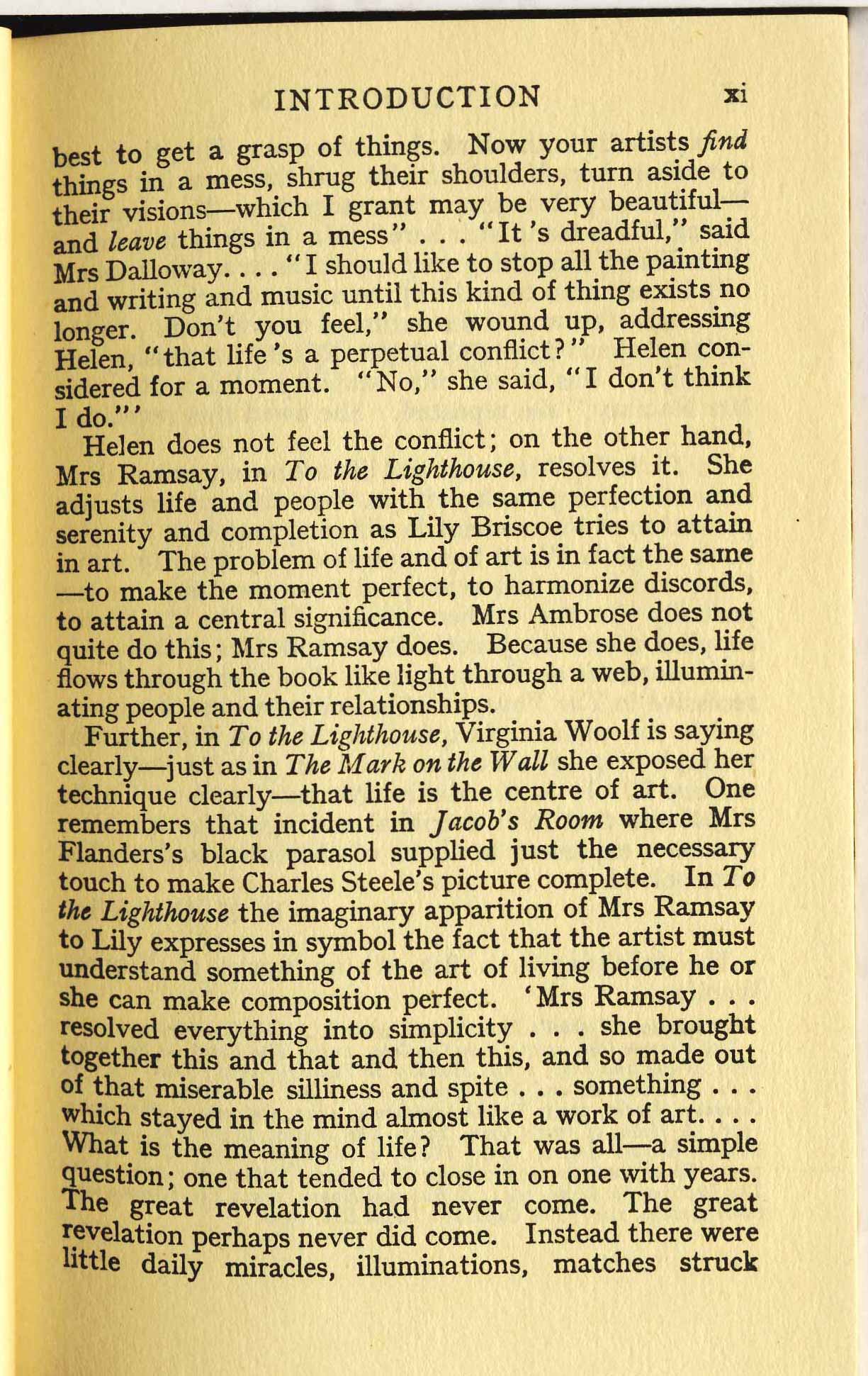
INTRODUCTION xibest to get a grasp of things. Now your artists findthings in a mess, shrug their shoulders, turn aside totheir visions—which I grant may be very beautiful—and leave things in a mess"..."It's dreadful," saidMrs Dalloway...."I should like to stop all the paintingand writing and music until this kind of thing exists nolonger. Don't you feel," she wound up, addressingHelen, "that life's a perpetual conflict?" Helen con-sidered for a moment. "No," she said, "I don't thinkI do."'Helen does not feel the conflict; on the other hand,Mrs Ramsay, in To the Lighthouse, resolves it. Sheadjusts life and people with the same perfection andserenity and completion as Lily Briscoe tries to attainin art. The problem of life and of art is in fact the same—to make the moment perfect, to harmonize discords,to attain a central significance. Mrs Ambrose does notquite do this; Mrs Ramsay does. Because she does, lifeflows through the book like light through a web, illumin-ating people and their relationships.Further, in To the Lighthouse, Virginia Woolf is sayingclearly—just as in The Mark on the Wall she exposed hertechnique clearly—that life is the centre of art. Oneremembers that incident in Jacob's Room where MrsFlanders's black parasol supplied just the necessarytouch to make Charles Steele's picture complete. In Tothe Lighthouse the imaginary apparition of Mrs Ramsayto Lily expresses in symbol the fact that the artist mustunderstand something of the art of living before he orshe can make composition perfect. 'Mrs Ramsay...resolved everything into simplicity...she broughttogether this and that and then this, and so made outof that miserable silliness and spite...something...which stayed in the mind almost like a work of art...What is the meaning of life? That was all—a simplequestion; one that tended to close in on one with years.The great revelation had never come. The greatrevelation perhaps never did come. Instead there werelittle daily miracles, illuminations, matches struck









